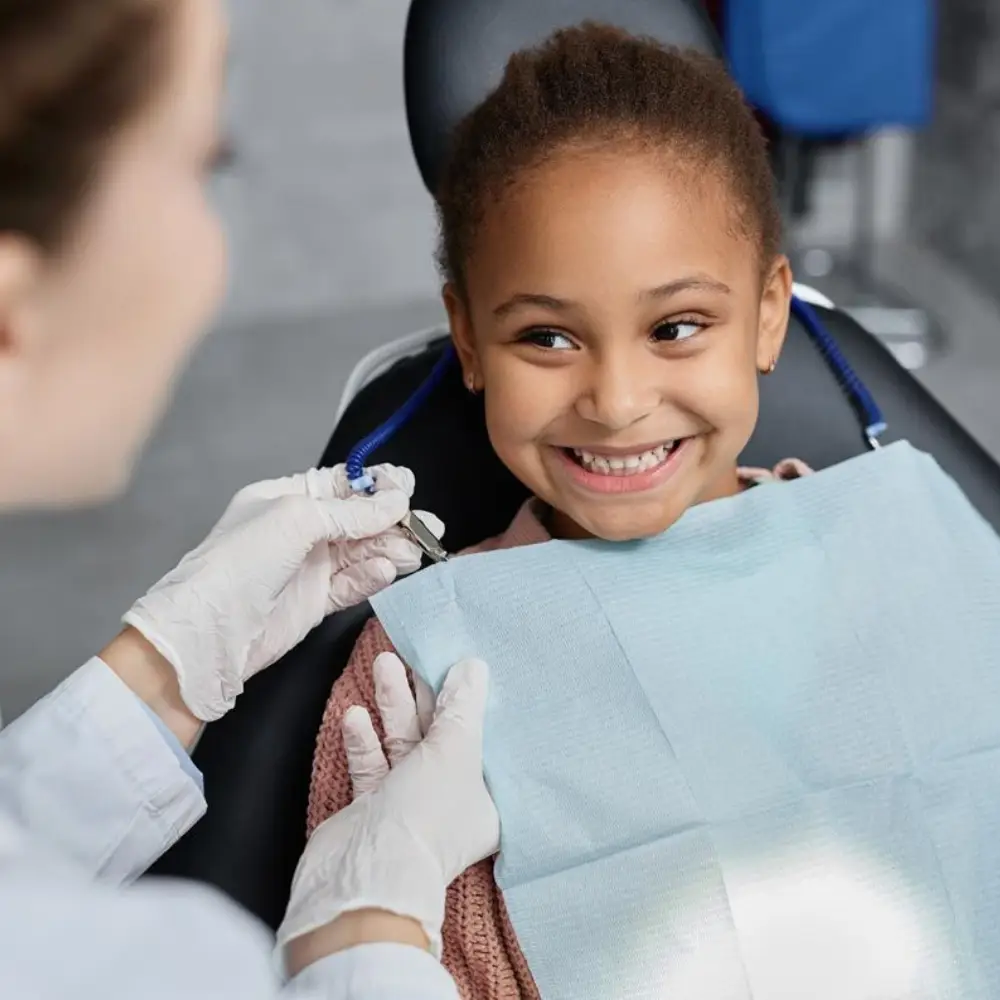Invisalign has notably revolutionized adult orthodontic care, offering a discreet alternative to traditional metal braces. Rather than relying on conspicuous brackets and wires, adults now have access to clear aligners that facilitate tooth alignment without drawing attention or significantly impacting daily routines. This innovation is particularly appealing for individuals aiming to advance professionally, re-enter the social or dating scene, or simply invest in personal well-being. Invisalign provides an effective means to improve dental aesthetics with minimal inconvenience.
This article will address the factors influencing the increasing popularity of clear aligners among adults, outline the procedural steps involved, examine associated costs, and provide guidance on selecting a qualified provider.
Invisalign for Adults: Why It’s the Preferred Choice Today

Invisalign represents a significant advancement in orthodontic treatment, particularly appealing to adults seeking dental correction without the conspicuousness of traditional braces. The clear aligners offer a discreet alternative, which integrates seamlessly into both professional and social environments. Unlike metal braces, Invisalign aligners are nearly invisible, allowing individuals to maintain confidence in various social interactions.
An advantage of Invisalign is the removable nature of the aligners. This feature facilitates ease of eating and oral hygiene maintenance, as users can simply remove the trays as needed. Additionally, the absence of wires reduces the likelihood of unexpected orthodontic emergencies and minimizes the need for frequent office visits.
Treatment plans are tailored to each individual, offering a balance of precision and adaptability. Whether addressing mild crowding or more moderate bite concerns, Invisalign provides an effective and understated solution. Given these factors, an increasing number of adults are selecting Invisalign as their preferred method for achieving dental alignment.
Appearance Matters: Clear Aligners vs. Traditional Braces
Invisalign aligners represent a significant advancement over traditional metal braces. Constructed from transparent, medical-grade plastic, these aligners are discreet and virtually unnoticeable when worn. This subtlety appeals particularly to adults who wish to maintain a professional appearance throughout their orthodontic treatment. Individuals can participate in social or professional interactions such as photographs or meetings without concern for the conspicuousness often associated with metal braces.
Comfort and Convenience for Busy Professionals
Traditional metal braces—think wires digging into your cheeks, bits of food stubbornly stuck after every meal—are, frankly, a hassle. Invisalign aligners mark a significant shift in orthodontic care. Crafted from transparent, medical-grade plastic, these aligners are almost undetectable to casual observers, so there’s no need to feel self-conscious during everyday interactions. One of the most notable benefits is their removability; users can take them out during meals, important presentations, or while brushing and flossing. This adaptability is particularly advantageous for adults balancing professional and social commitments.
With Invisalign, dietary limitations and complicated cleaning routines become a thing of the past. In short, Invisalign offers orthodontic treatment that prioritizes comfort, flexibility, and discreetness, aligning well with the demands of contemporary lifestyles.
Boosting Confidence During and After Treatment
Many adults experience self-consciousness regarding misaligned or crowded teeth, yet frequently avoid traditional braces due to their conspicuousness and associated discomfort. Invisalign offers a discreet alternative, utilizing clear aligner trays that are barely noticeable during daily interactions. This subtlety allows individuals to pursue orthodontic treatment without attracting undue attention. Notably, as teeth shift incrementally, improvements become apparent early in the process, often resulting in enhanced self-confidence even before the treatment concludes. Each new aligner tray represents both physical advancement and psychological reassurance. In sum, Invisalign’s approach not only facilitates dental correction but also contributes positively to one’s self-perception throughout the treatment journey.
How Invisalign Works for Adult Teeth Alignment

Invisalign represents a modern alternative to traditional orthodontics, relying on a sequence of transparent, custom-fitted aligners to adjust adult dentition over time. These aligners are produced utilizing advanced 3D imaging technology, which allows for a highly precise and individualized fit. Patients are instructed to wear each set of aligners for approximately one to two weeks, during which the trays exert controlled, gradual pressure to guide teeth into their intended positions.
Importantly, while the aligners are removable, facilitating oral hygiene and dietary flexibility—optimal outcomes require consistent use for 20 to 22 hours daily. Regular follow-up appointments are necessary, enabling clinicians to monitor progress and distribute subsequent aligner sets. Treatment duration is variable and contingent upon case complexity; however, most adults achieve satisfactory alignment within a 6- to 18-month timeframe. Invisalign thus offers a discreet and convenient solution for dental correction, minimizing the disruptions associated with conventional braces.
Customized Treatment Plans Using 3D Scanning
The Invisalign process commences with the utilization of advanced digital scanning technology to generate a precise three-dimensional model of the patient’s oral structure. This approach eliminates the need for traditional physical impressions, thereby enhancing accuracy and comfort. Subsequently, the digital scan facilitates the development of a detailed, individualized treatment plan, mapping the progressive movement of each tooth toward optimal alignment. Notably, patients are afforded the opportunity to view a digital simulation of their anticipated post-treatment smile, offering a clear visualization of the projected outcome.
Aligner Trays and How They Shift Teeth Gradually
Each aligner is typically worn for approximately one to two weeks before progressing to the next in the sequence. These devices exert gradual, controlled pressure, facilitating incremental movement of the teeth. Notably, because the aligners are removable, patients are able to maintain their usual oral hygiene practices, such as brushing and flossing—an aspect that is often more challenging with traditional fixed braces.
Retainers and Post-Treatment Support
Upon completion of your final set of trays, your dentist will provide a custom-made retainer designed to maintain your newly aligned teeth. Regular use of this retainer, most importantly during nighttime, plays a critical role in preventing your teeth from gradually shifting back to their original positions. Consistent adherence to your retainer regimen is essential for preserving the results of your orthodontic treatment.
Invisalign Cost for Adults: What to Expect

The cost of Invisalign treatment for adults generally falls within the $3,000 to $7,000 range, influenced by the complexity of dental alignment issues, the provider’s qualifications, and geographic location. Milder cases typically incur lower fees, whereas more intricate corrections such as significant malocclusion or crowding may increase the total cost. Additionally, provider reputation and regional market variations can affect pricing.
Many dental practices accommodate patients with payment plans, enabling manageable monthly installments rather than requiring the entire amount upfront. Dental insurance may also contribute, particularly when orthodontic benefits are specified in the plan’s coverage; however, verification is recommended.
Invisalign fees often encompass more than the aligners themselves. The comprehensive package usually includes initial consultations, digital imaging or scans, periodic progress evaluations, and post-treatment retainers. It is advisable to request a detailed cost breakdown before committing to treatment, in order to prevent unforeseen expenses.
Ultimately, investing in Invisalign entails more than cosmetic enhancement. The benefits extend to improved oral health, greater comfort, and increased self-confidence, reflecting its long-term value beyond mere aesthetics.
How Much Does Invisalign Cost Without Insurance?
In the United States, the cost of Invisalign treatment generally falls between $3,500 and $7,000. This variation in pricing is largely influenced by factors such as the severity of dental misalignment, the anticipated duration of treatment, and the patient’s geographic location. Cases requiring only minor corrections and shorter treatment periods tend to be less expensive, whereas more complex orthodontic needs can significantly increase the overall cost.
Payment Options and Monthly Financing Plans
Many dental clinics now provide the option to pay for Invisalign through monthly installments, reducing the need for a significant upfront payment. In some cases, clinics offer 0% interest plans for eligible patients. These flexible financing arrangements significantly improve access to Invisalign by making the cost more manageable for individuals.
Does Dental Insurance Cover Invisalign for Adults?
Insurance coverage for adult orthodontic treatments, such as Invisalign, can be quite variable. While certain insurance plans may provide partial reimbursement, the specifics differ significantly across providers. It is advisable to consult directly with your insurance company to obtain a detailed explanation of your benefits. In cases where insurance does not extend coverage, Health Savings Accounts (HSAs) and Flexible Spending Accounts (FSAs) generally permit the allocation of funds toward Invisalign expenses.
Frequently Asked Questions (FAQs)
1. Is Invisalign as effective for adults as for teens?
Yes, Invisalign is highly effective for adults of all ages, not just teens. While younger patients may experience slightly faster movement due to more flexible bone structures, adults can still achieve excellent results with proper use. The most important factor is consistency—wearing the aligners for 20 to 22 hours a day ensures steady, predictable progress. Adults often excel in this area, as they tend to be more disciplined and motivated throughout treatment. Many achieve outcomes that match or even surpass those seen in younger patients. Age isn’t a barrier to success with Invisalign, it’s your commitment that counts. With the right care and follow-through, adults can enjoy a beautifully aligned smile and long-term oral health benefits.
2. How long does Invisalign take for adult patients?
Treatment time with Invisalign depends on how complex your tooth movement is. On average, adult cases take between 12 to 18 months, but minor alignment issues may be completed in as little as 6 months. More involved cases like those requiring bite correction may take a bit longer. During your initial consultation, your provider will examine your bite, take digital scans, and design a personalized plan that outlines each phase of your treatment. This custom timeline helps you know what to expect and stay on track. Regular check-ins ensure your progress stays aligned with the plan, with adjustments made if needed.
3. Can I remove Invisalign aligners for work events or meetings?
Yes, that’s one of Invisalign’s biggest advantages. You can remove the aligners for important events, meals, or speaking engagements without disrupting your routine. This flexibility makes Invisalign especially appealing to adults with active social or professional lives. Just remember to wear them at least 20–22 hours a day to keep your treatment on schedule. Occasional short removals won’t derail your progress as long as you stay consistent overall. Always store your aligners in their case when not in use to avoid damage or loss.
4. What happens if I don’t wear Invisalign 22 hours a day?
Skipping wear time regularly can significantly slow down your Invisalign progress. When aligners aren’t worn consistently, teeth may shift off track, making it harder for future trays to fit properly. This can extend your overall treatment timeline and may even require refinements—extra sets of trays to realign your teeth. While life happens, consistent wear (20–22 hours a day) is key to predictable, efficient results. If you do run into challenges like travel, illness, or special events, be honest with your provider. They can adjust your plan or offer tips to help you stay on course. Open communication ensures setbacks stay minor and your smile stays on track
5. Is Invisalign covered under FSA or HSA?
Yes, most Flexible Spending Accounts (FSAs) and Health Savings Accounts (HSAs) can be used to cover Invisalign treatment. These accounts use pre-tax dollars, which can significantly reduce your out-of-pocket expense. To use them, simply ask your provider for a detailed treatment estimate and itemized receipt, these are often required for reimbursement. Some clinics may also allow direct FSA/HSA payments at the time of service. Just be sure to check your plan’s specific guidelines and any deadlines for claim submissions. Using these benefits can make Invisalign more affordable while maximizing your healthcare dollars
You’ve waited long enough to feel great about your smile. Invisalign makes it possible to straighten your teeth on your terms with confidence, comfort, and results you’ll love. Whether you’re looking for subtle corrections or a full alignment, there’s a plan made just for you.
Ready to begin? Graham Park Dental offers personalized Invisalign treatment for adults that fits into your schedule and supports your lifestyle. Call us or book your free consultation online to get started. Your straighter, more confident smile is closer than you think.


